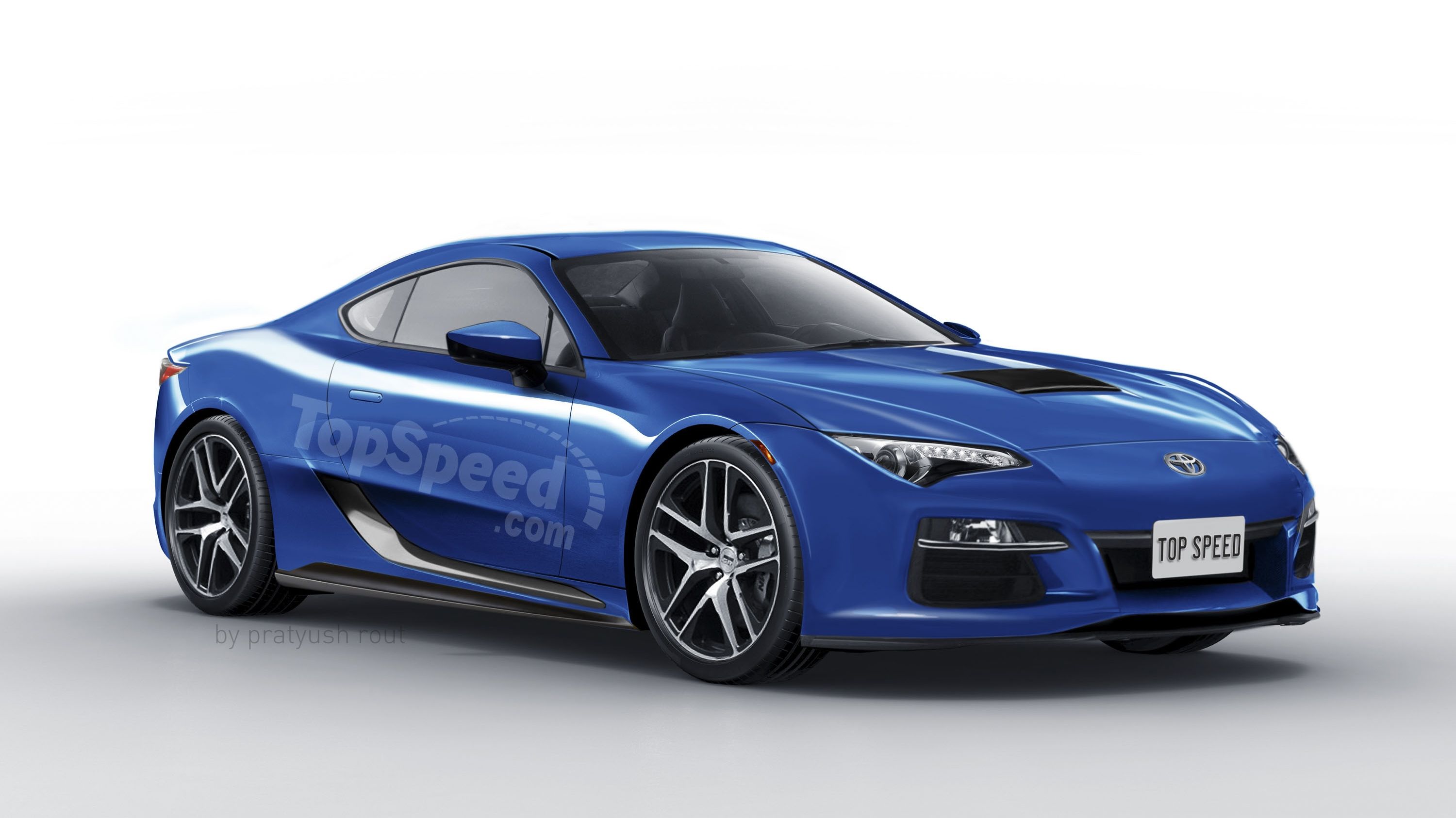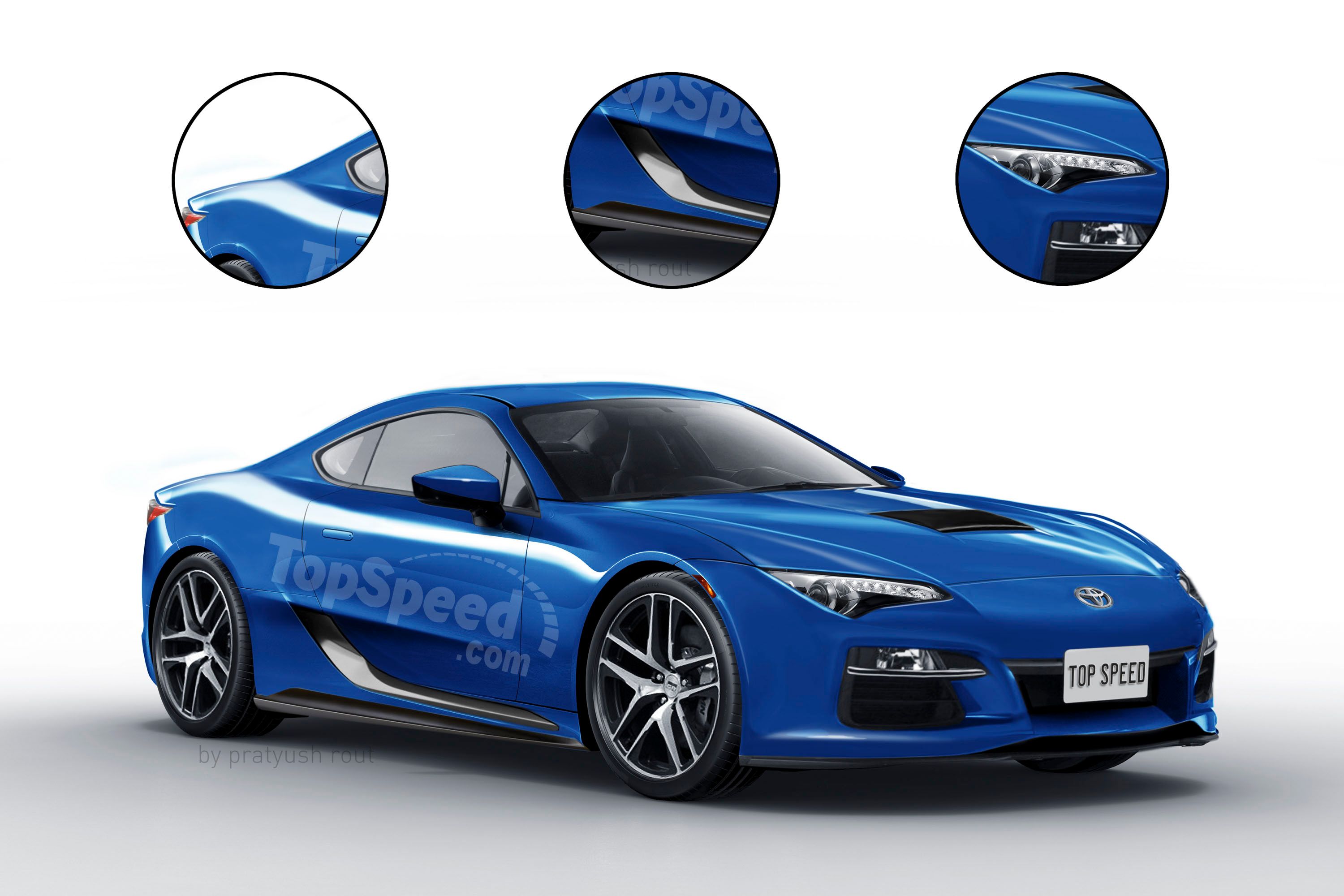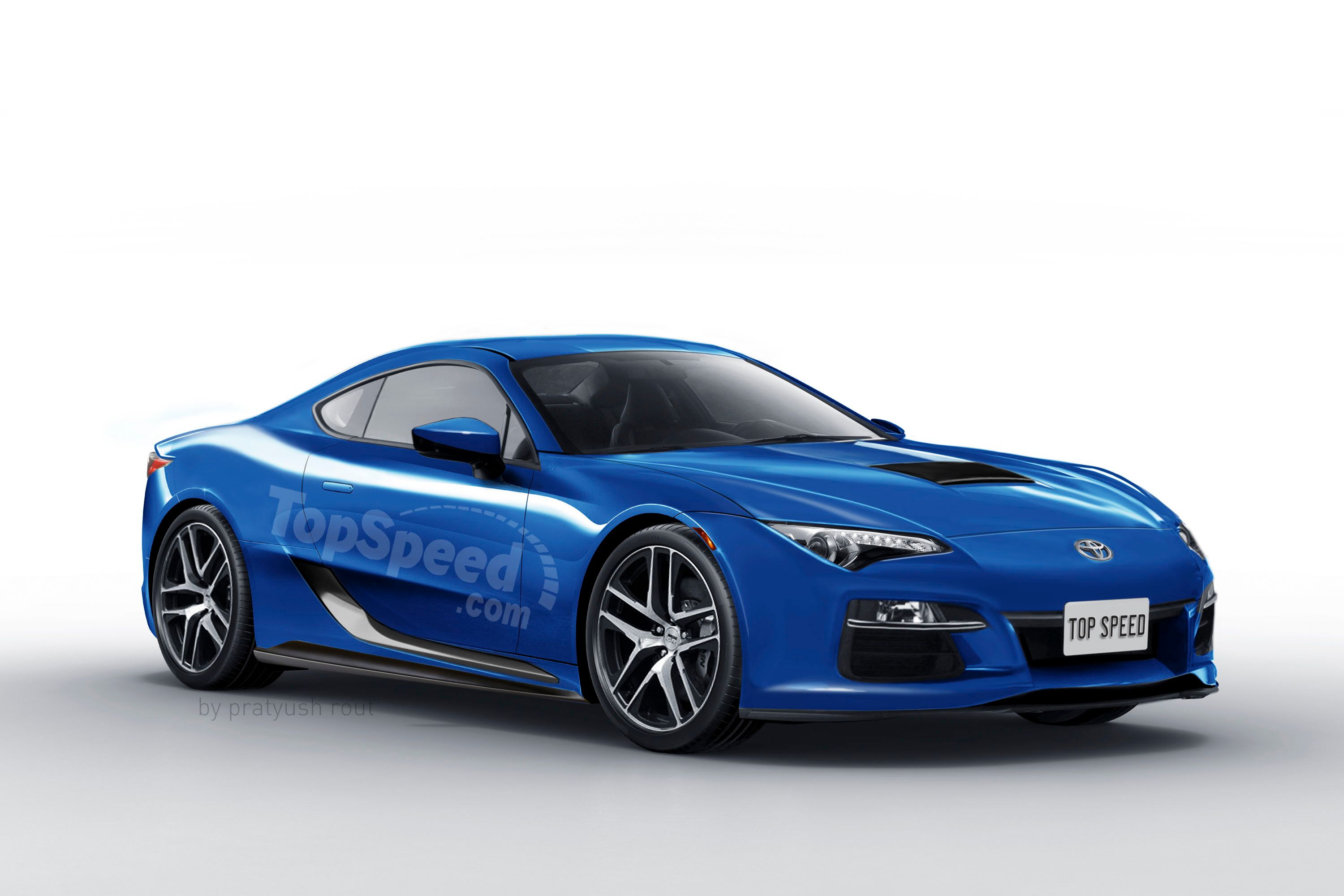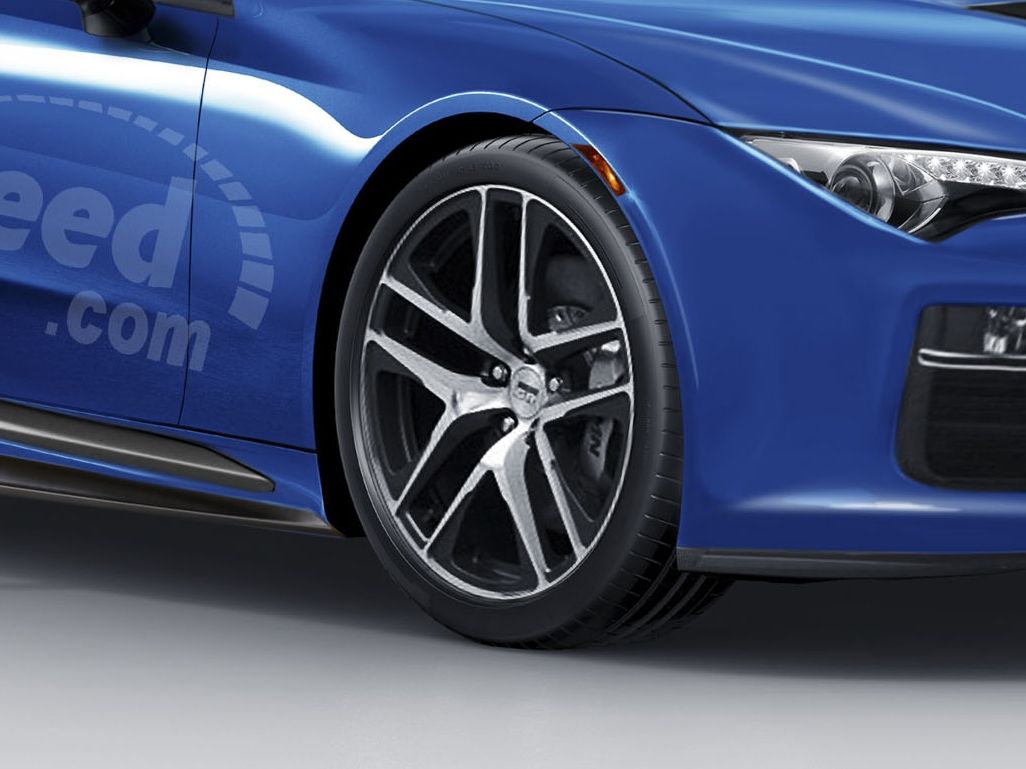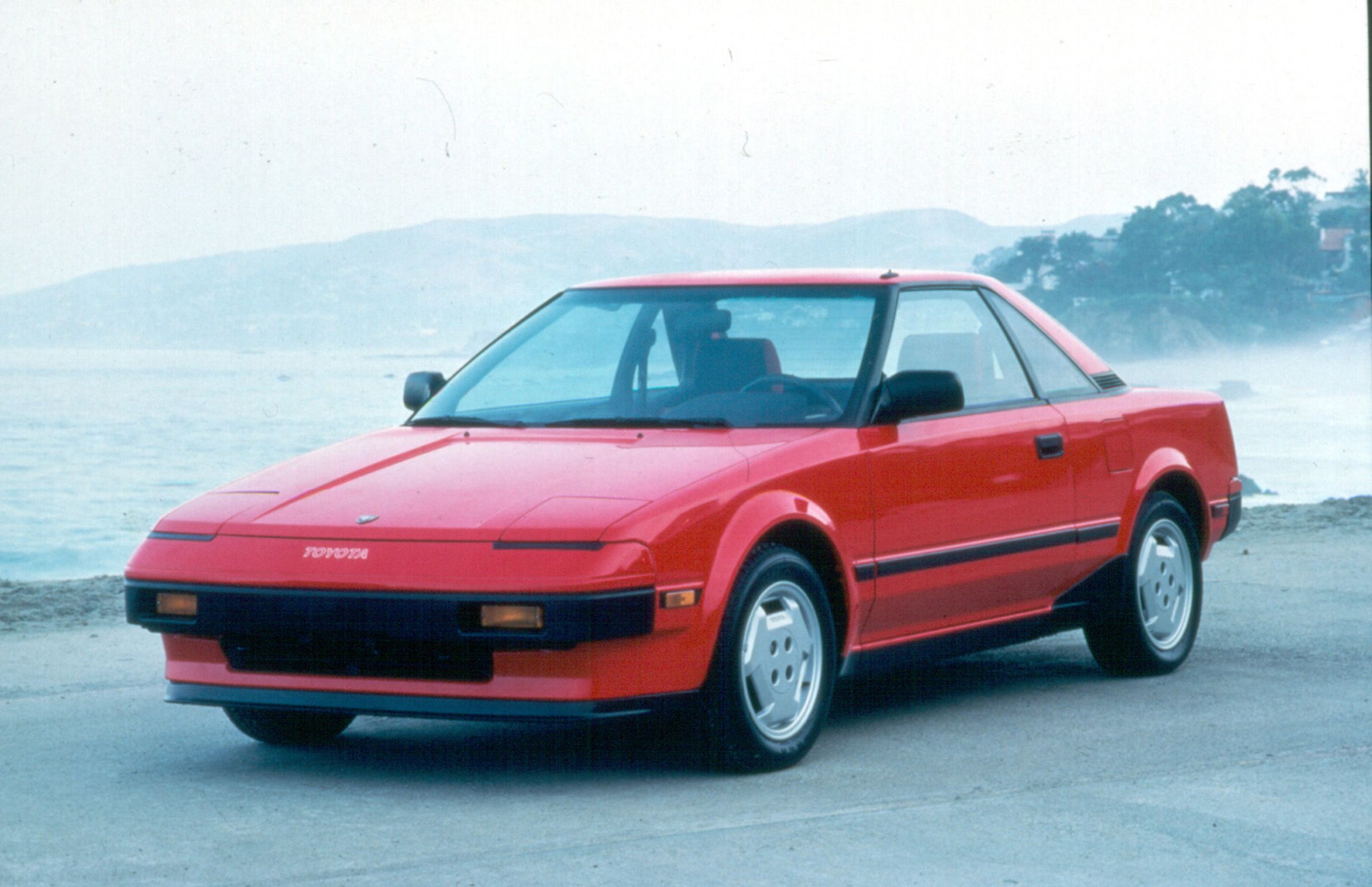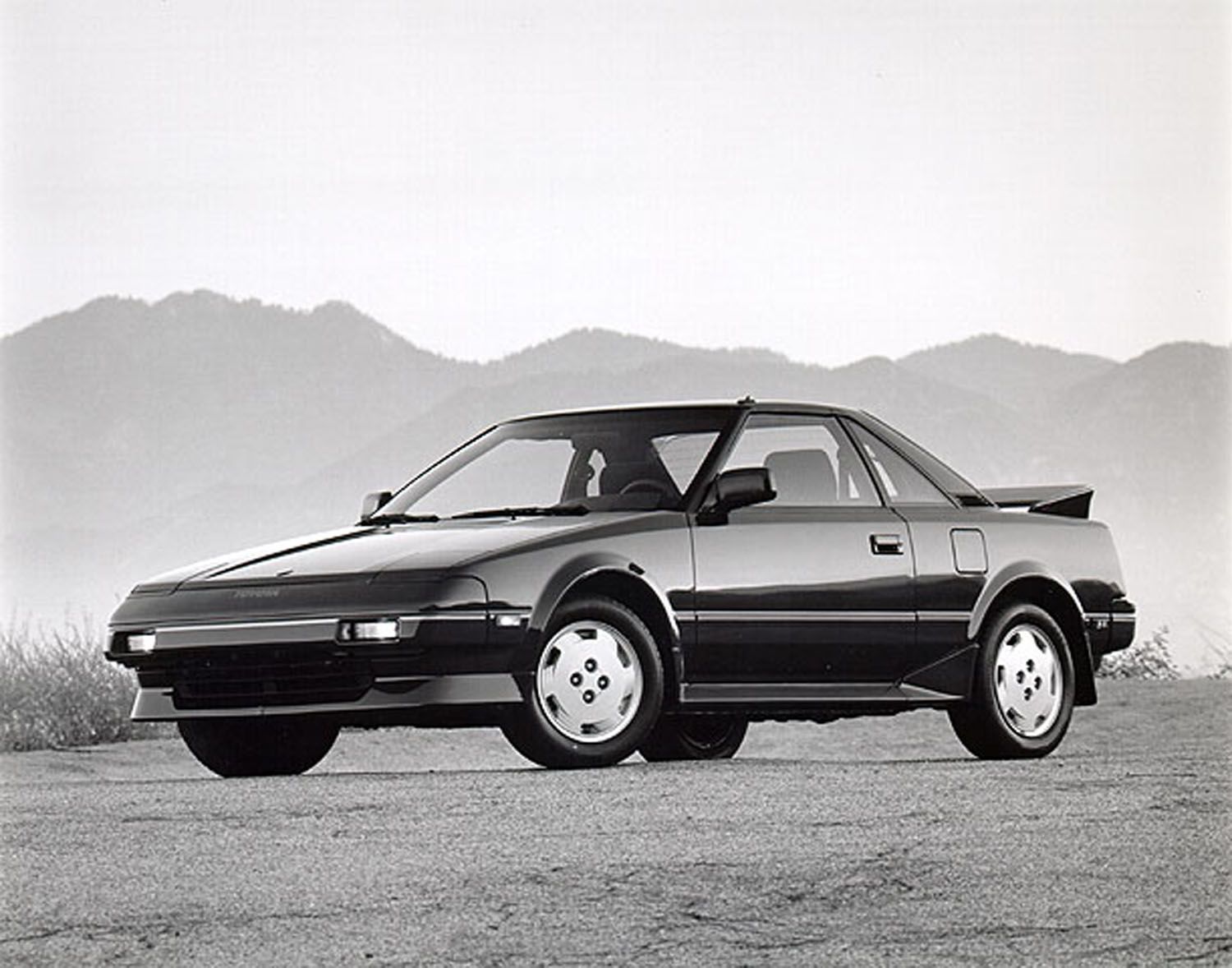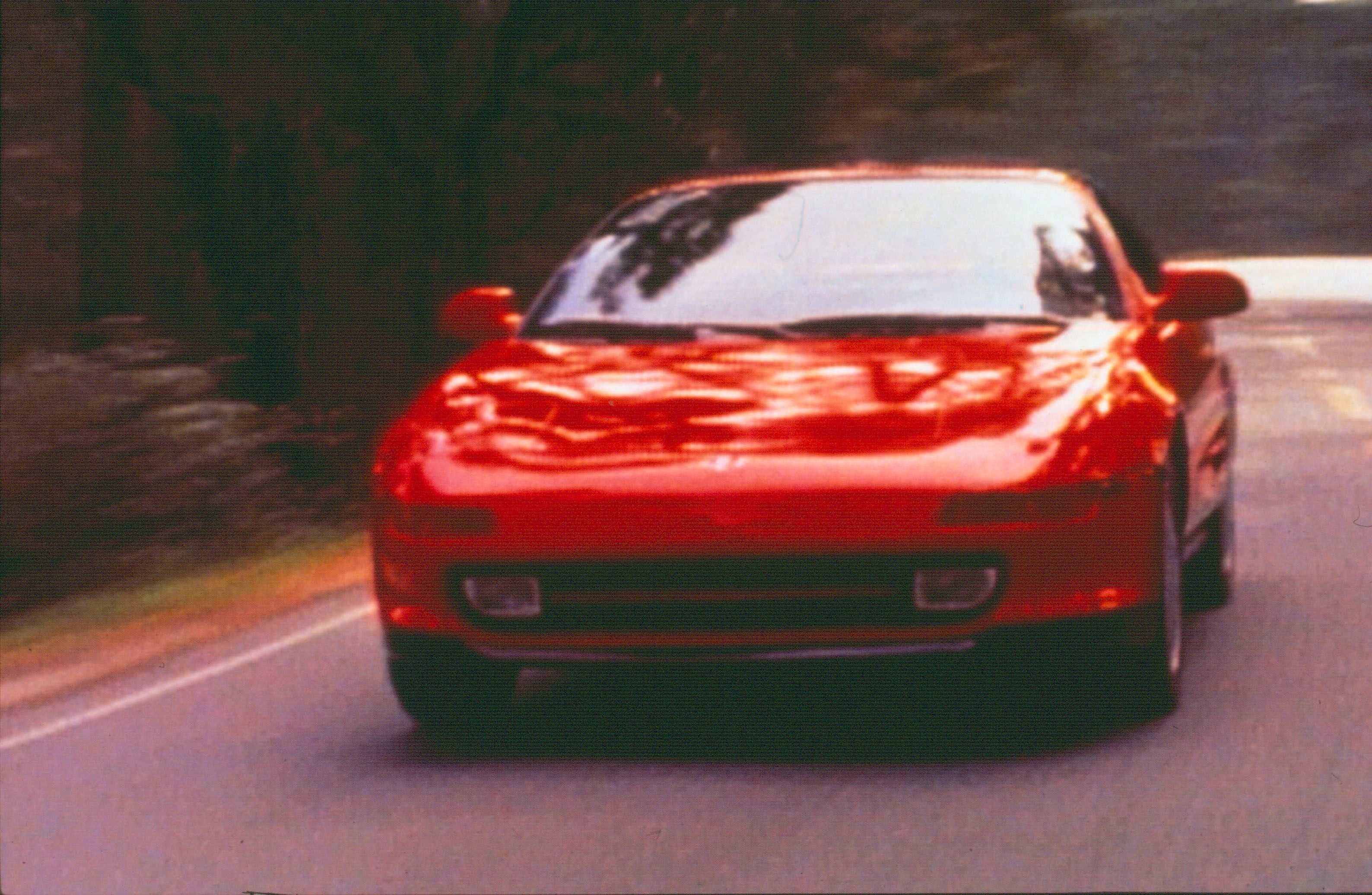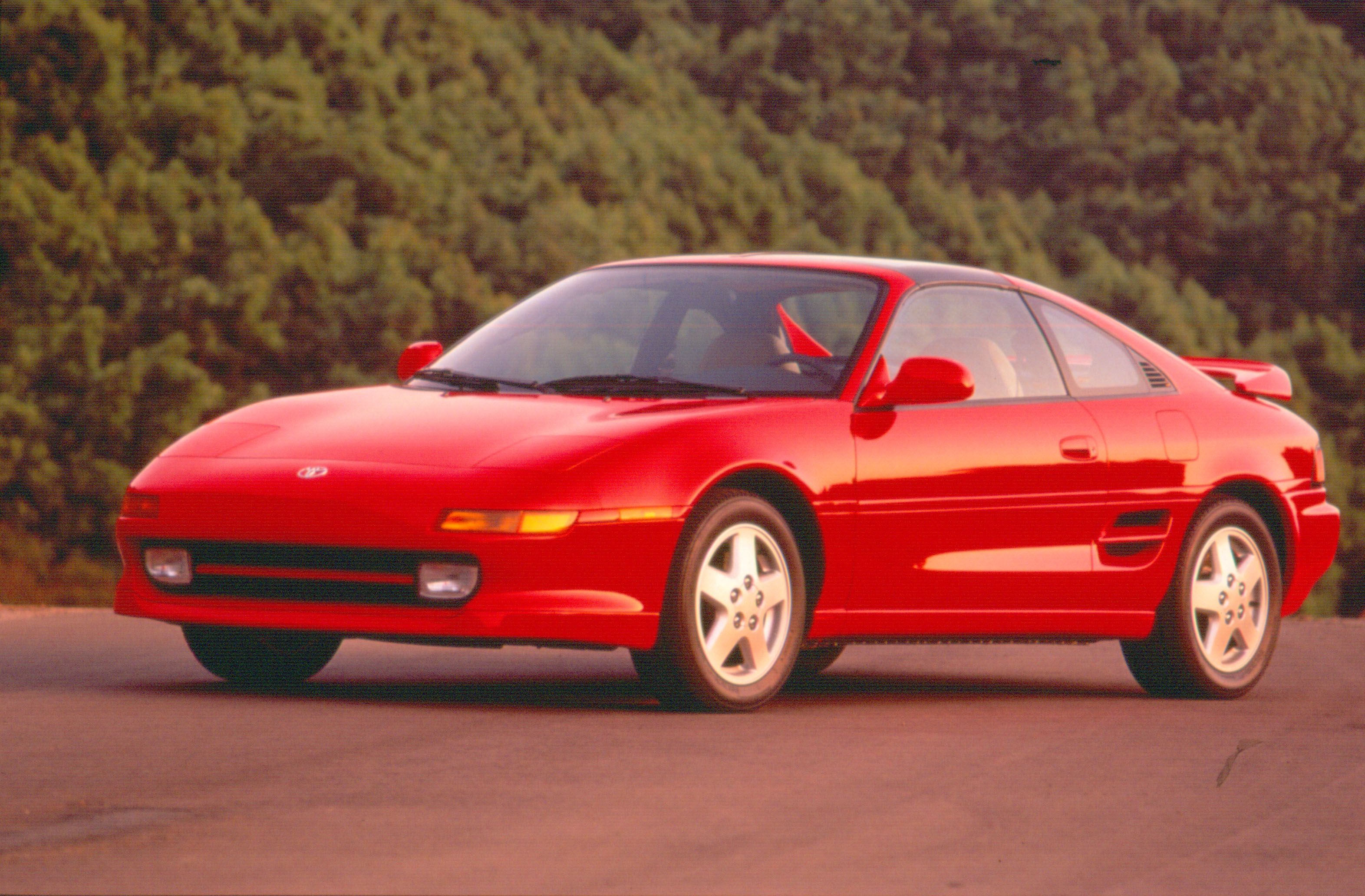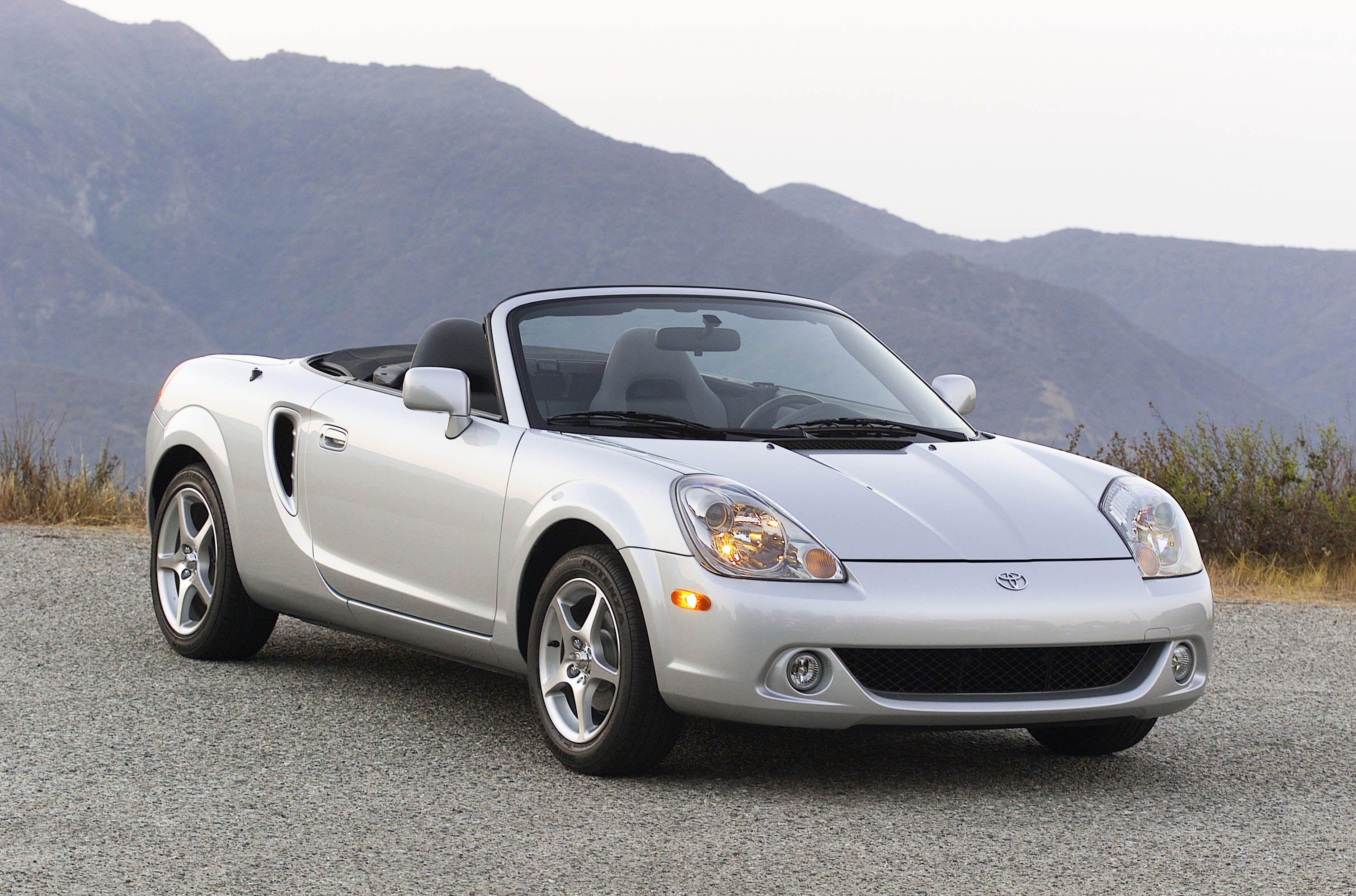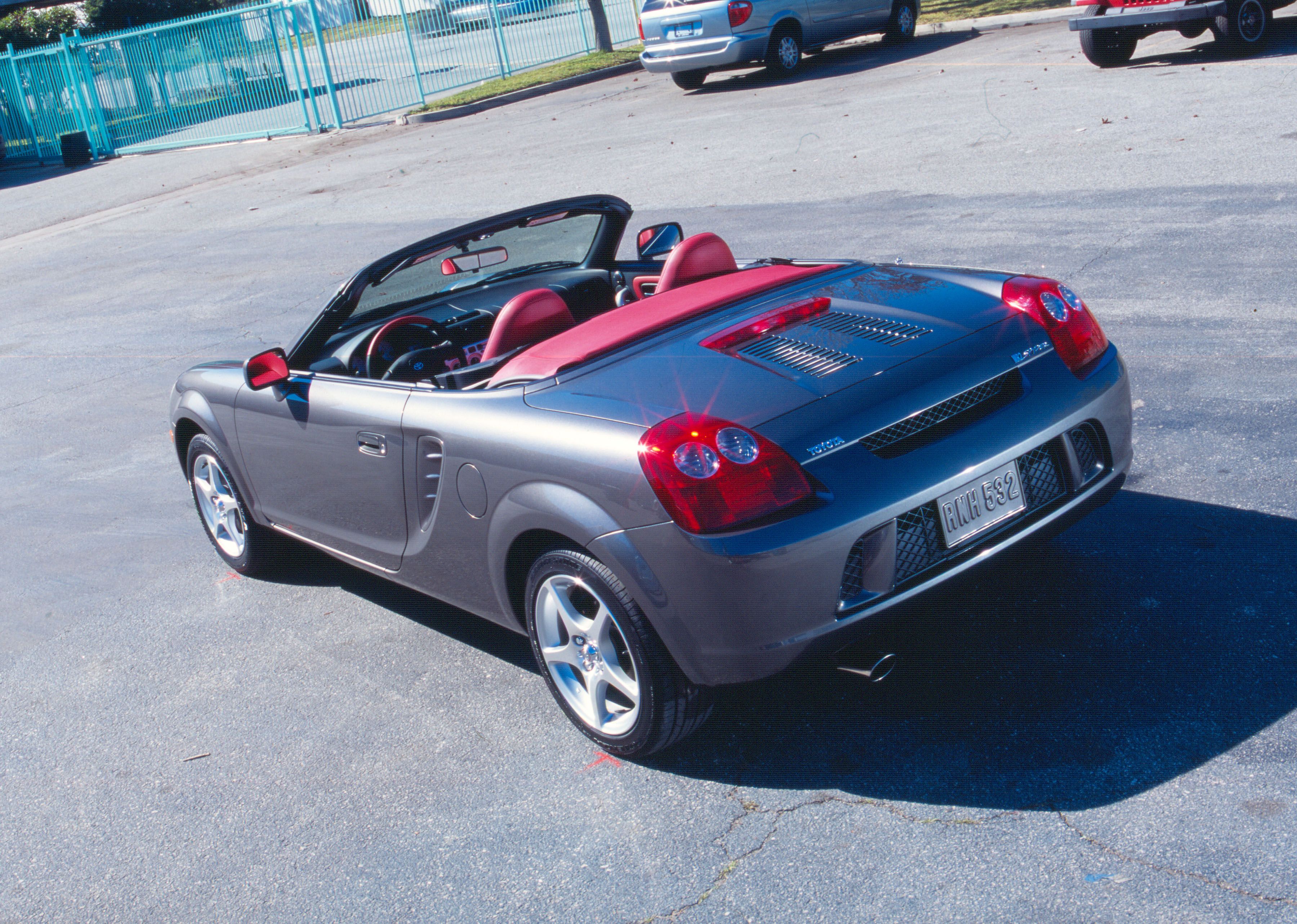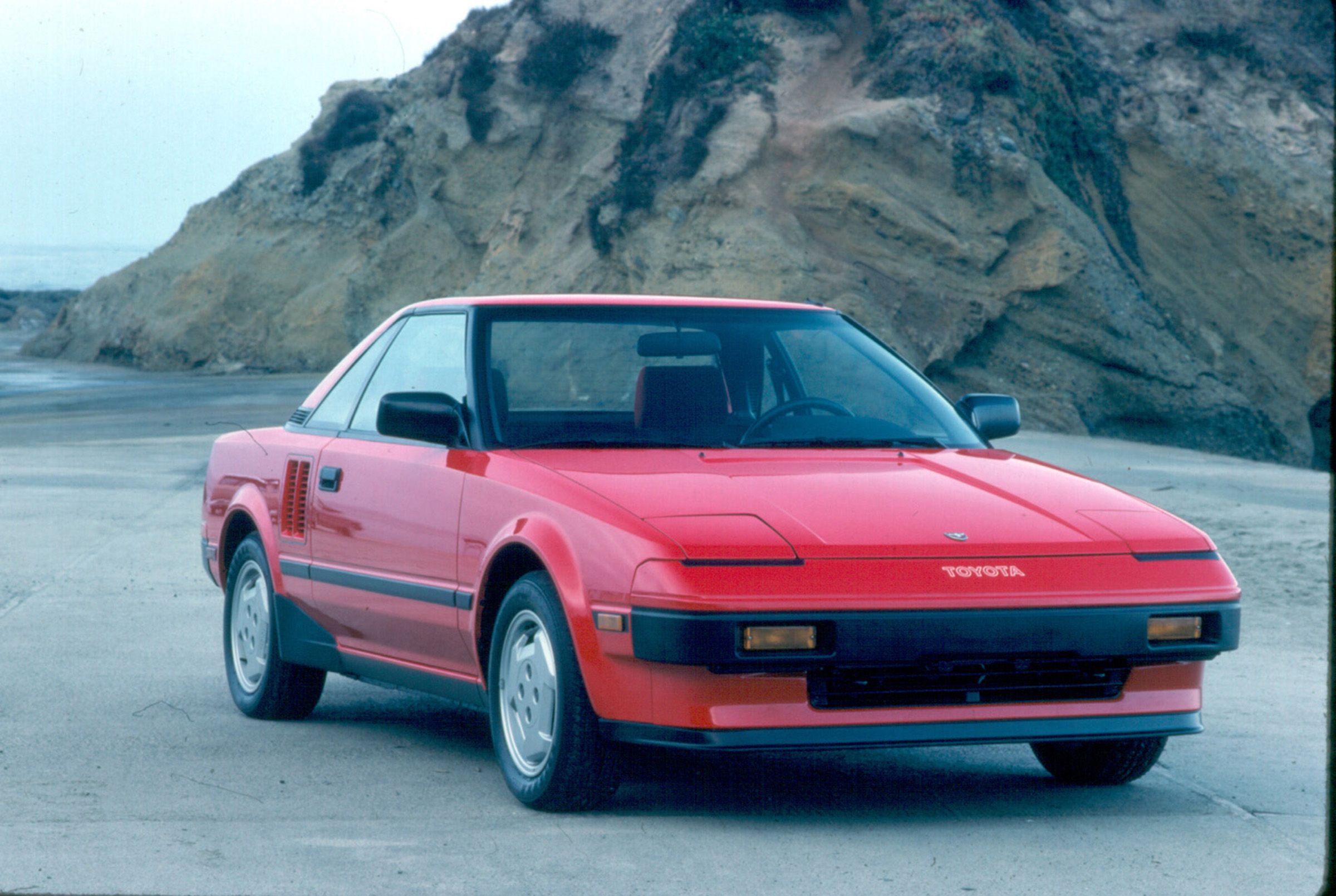Originally produced between 1984 and 2007, the Toyota MR2 is a legendary little sports car, boasting a cult-like following and all the right stuff to make any auto enthusiast’s mouth water. Throughout the MR2’s 23-year career, Toyota ushered in three individual generations, consisting of the W10 between 1984 and 1989, the W20 between 1990 and 1999, and the W30 between 2000 and 2007. The name is a reference to the drivetrain layout (mid-engine, rear-wheel drive), while the “2” denotes the number of seats in the cabin. The original formula goes something like this – transverse mid-engine, rear-wheel drive, sharp, responsive handling, very little weight, small exterior dimensions, and an affordable sticker. All told, the Toyota MR2 is a true-blue classic, a pure driver’s ride, like a compact Japanese Ferrari without the exotic price tag. And now it’s looking like Toyota might bring it out of retirement.
The speculation stems from a recent statement made by Gazoo Racing head Tetsuya Tada, who told Evo at the 2017 Geneva Show that he hopes to have “The Three Brothers” back in the Toyota lineup “as soon as possible.” In case you were wondering, those “brothers” include the Supra, the Celica, and the MR2, Toyota’s iconic ’90s-era performance machine trio. Word has it we’re inching closer to a reveal of the new Supra, and the current GT86 is a decent replacement for the Celica, but what about a new Mister Two? We got curious, so we drew up a rendering and put together a few theories.
Continue reading to learn more about the Fourth-Generation Toyota MR2.
2020 Toyota MR2
- Make: Array
- Model: 2020 Toyota MR2
- Engine/Motor: inline-4
- Horsepower: 200
- Torque: 175
- [do not use] Vehicle Model: Array
Exterior
Each of the MR2’s three previous generations offered their own unique styling and exterior features, including the boxy ‘80s-tastic W10, the streamlined speed wedge W20, and the topless, huge-headlights-having W30. That said, there is a good deal of crossover between them. For example, the stance for all three is wide and low, with short overhangs and aggressive proportions. The exterior dimensions are also all quite tiny, especially the first gen, which measures in with a 91.3-inch wheelbase, 155.5-inch length, 65.6-inch width, and 48.6-inch height. We would expect the same attributes from the fourth-generation model, although it wouldn’t be totally out of line to see the dimensions increase a little over the predecessors, given modern crash standards and other such size-adders.
Note: TopSpeed Fourth-Generation Toyota MR2 rendering pictured on the top, 2012 Lexus LFA pictured on the left bottom, TopSpeed 2019 Toyota Supra rendering pictured on the right bottom.
Aesthetically, the fourth-gen MR2 will likely pull heavily from the current Lexus LFA supercar and forthcoming next-gen Supra, plus a little Toyota GT86 thrown in for good measure. The shape of the headlight housings get a triangular, pulled-back appearance that helps lead the eye rearwards and towards the fenders, while a trio of front intakes brings the nose to an aggressive point. Clear corner lights add a touch of “premiumness,” as do LED daytime running lights along the top edge of the housings. A lower splitter element keeps the atmosphere in line.
In the corners, we’ll find lightweight alloy wheels with a split-spoke design similar to the rollers on the LFA. Wheel sizing should be 18 inches as standard, with 19’s added to the options list. Both the 18’s and 19’s will get staggered width, mounting more rubber in the rear for extra squirt out of the corners. A lower character line rises into side-mounted intakes just ahead of the front wheels, while an attractive kink brings the roofline down into the rear deck.
The rear will likely get louvered vents to keep the engine cool, plus a trailing edge deck spoiler integrated into the bodywork. The taillights will get a flat, horizontal design, and come equipped with LEDs. A matte-black diffuser element will match up with the front splitter and side skirts, while a polished dual-tip exhaust creates the soundtrack.
Up top, we went with a standard hardtop configuration, but considering the MR2’s history, a T-top and convertible configuration are also possible. Toyota might even offer upgraded TRD components like a roof-mounted snorkel to force feed the engine cool air. Plenty of carbon fiber doodads and add-ons are also likely to make the options list.
Interior
Inside the next-gen MR2, we’re imagining a combination of the current GT86 (pictured left) and the fourth-gen Supra (pictured right). A driver-focused layout and highly bolstered sports seats are the standard here, plus a tight fit dimensionally speaking. Black upholstery will pervade throughout, complemented by red contrast stitching and bits of faux carbon fiber trim. Bits of polished metal-look trim will be used for the center console, shifter surround, air vents, and other spots where appropriate. The gauges will be analog, with a large, centrally mounted tachometer flanked by a speedometer and various temperature gauges. A small digital readout will provide the odometer readout.
The pedals will be made from metal and get studded rubber inserts, while the steering wheel and shift knob will both get leather covers. Speaking of the steering wheel, we expect a three-spoke unit with a smaller diameter and plumped-up handgrips at the 2 and 10 positions. Forget the multifunction, thumb-mounted buttons – when you’re driving this thing, you’re gonna wanna keep your eyes looking for the next apex, not checking on the music selection.
That said, the next MR2 won’t be some stripped down track rat. It’ll still have the civility required for street duty, including the same infotainment system currently equipped in the GT86. That means a 7.0-inch touchscreen in the dash, an eight-speaker stereo from Pioneer, Bluetooth streaming support, HD radio, smartphone support, and various AUX and USB inputs. Navigation will be an available extra.
All the usual comfort features will be included as well, such as air conditioning, adjustable seats, power side-folding mirrors, cruise control, and the like. It’s also likely the MR2 will get Toyota Safety Sense, the automaker’s brand of active and passive safety tech, which includes stuff like Lane-Departure warning, automatic high beams for the headlights, and similar gear.
Drivetrain
Note: Toyota Camry four-cylinder engine pictured here.
Several years ago, I was given the opportunity to experience an absolutely incredible second-gen W20 MR2 tuner car rocking a 3.0-liter V-6 engine swap. Plucked from the nose of a Camry, the six-cylinder might have had humble roots, but mounted just behind the cabin of that well-preserved Toyota sports car, the results were epic in the extreme. Of course, the aftermarket supercharger kit didn’t hurt, either.
I’ll never forget that car, and indeed, my expectations for the fourth-gen model are slightly skewed by memories of the six-swapped MR2. If I had my way, the new one would get a six-cylinder straight from the factory.
Unfortunately, the odds of that happening aren’t great. The MR2 isn’t about power – it’s about low weight and handling prowess, and a V-6 just isn’t needed for stuff like that. Rather, the Supra will be the burnout monster of Toyota’s lineup.
So where’s that leave the new Mister Two?
We’re thinking with a 2.5-liter inline four-cylinder, with double overhead cams, 16 valves, and variable valve timing. As luck would have it, Toyota has something just like right now, and it can be found (surprise, surprise) under the hood of the current-generation Camry.
2018 Toyota Camry - Four-Cylinder Engine specifications
|
Engine |
2.5-liter, 4-cylinder, aluminum alloy block with aluminum alloy head |
|
Horsepower |
203 HP @ 6,600 RPM |
|
Torque |
184 LB-FT @ 5,000 RPM |
|
EPA Estimated Fuel Economy (city/highway/combined MPG) |
29/41/34 |
Power will probably look like 200 to 250 ponies and about 175 pound-feet of torque. Those numbers would place it above the GT86 in terms of peak output, but well below estimates for the next-gen Supra. Acceleration performance would be adequate, with the 0-to-60 mph sprint done in the low-six-second range. Top speed would approach 150 mph. Swapping the cogs would be a hands-and-feet operation thanks to a notchy, quick-shifting six-speed manual gearbox with the option for a short-throw shifter from TRD.
While not terribly impressive compared to something like a modern exotic, numbers like that would be about right for a car like the new MR2. If cheap straight-line performance is more your thing, then might we suggest a Camaro?
One last thing – it’s also possible (although unlikely) the next-gen MR2 would come equipped with a hybrid powertrain. After all, Toyota certainly knows what it’s doing when it comes to electrification, as evidenced by its impressive line of battery-assisted commuters. Perhaps it’s time to turn those electrons into something more entertaining than boosted mpg?
|
Toyota 86 |
Toyota MR2 |
Toyota Supra |
|
|
Engine |
2.0-liter, 4-cylinder, boxer, aluminum alloy block and heads |
2.5-liter, 4-cylinder |
V-6 hybrid system |
|
Horsepower |
205 HP @ 7,000 RPM |
200-250 HP |
400 HP |
|
Engine |
156 LB-FT @ 6400 RPM |
175 LB-FT |
TBA |
|
Horsepower |
6-Speed Manual/6-Speed Automatic |
quick-shifting six-speed manual |
TBA |
|
Torque |
6.4 seconds |
5.9-6.2 seconds |
5.0-5.5 seconds |
|
Transmission |
136 mph |
150 mph |
186-190 mph |
Suspension And Chassis
Over the past few years, Toyota has been rather eager to share news about its TNGA (Toyota New Global Architecture) underpinnings. While designed primarily for uber-efficient FWD gas sippers, TNGA is a signal that big updates are coming down the pipeline, and a mid-engine adaptation of some Lexus-based RWD platform could very well be in the cards.
Regardless, the fourth-gen MR2’s primary focus should be on cutting as much weight as possible in the name of sprightly handling. The W30-generation tipped the scales at about 2,200 pounds, but even with a hardtop, we’d expect the fourth-gen to weigh in at around 2,500 pounds.
While not quite as lightweight as something like the new fourth-gen ND Mazda MX-5, a 2,500-pound MR2 would still have the right stuff to be an absolute joy on the track or a winding back road. Underneath would be an independent suspension tuned and tweaked to perfection, plus oversized brakes to haul it down.
Of course, it should be noted that the original MR2 was known for being a bit of a handful, especially for inexperienced drivers. Thing is, that shouldn’t be some big revelation to anyone familiar with mid-engine cars. Putting the engine in the middle makes a car much more responsive and eager to rotate, which might come as a surprise to anyone used to the terminal understeer so common in just about every other street car in existence. But that tail-happy personality is the reason all the popular exotics (Ferrari, Lamborghini, McLaren, Lotus, etc.) and big name race series (Formula 1, LMP1, etc.) go with the configuration. The thing that makes the MR2 stand out compared to something like the 720S is its price tag.
And hell – if you really want something that safely understeers everywhere it goes, get a Camry.
Prices
Ready to fork over your hard-earned cash for the fourth-gen MR2? Us too. But how much should you expect to pay?
For starters, a sports car like this would slot between the GT86 (starting price is $26,255) and the next-gen Supra (estimated at $60,000), which leaves a pretty sizable gap. But, all things considered, a price tag of about $45,000 feels right.
Competition
Alfa Romeo 4C
The Italians are certainly no strangers to the mid-engine set-up, and the Alfa Romeo 4C is a perfect example of that familiarity. This thing looks downright sexy, rocking exotic proportions that manage to turn heads everywhere it goes. Providing the power is a 237-horsepower turbocharged four-cylinder, good enough for a sprint to 60 mph in the low-four-second range. Pair it with just 2,500 pounds of curb weight, and the result is one extremely desirable two-seater. Pricing starts at $55,900.
Read more about the Alfa Romeo 4C.
Porsche Boxster
If you’re looking for affordable four-wheeled fun with the engine mounted somewhere towards the back, then the Porsche Boxster is the benchmark. The latest iteration is dubbed the 718, and it offers a choice of two turbocharged four-cylinder engines. These include the base model’s 2.0-liter rated at 300 horses and the S model’s 2.5-liter rated at 350 horses. Curb weight tips the scales at over 3,000 pounds, but the 0-to-60 mph sprint takes just four seconds dead to complete. Pricing starts at $56,000.
Find out more about the Porsche Boxster.
Conclusion
Toyota knows exactly how to make cars that sell. Camry, Corolla, Rav4… these are nameplates you’ll find in just about any parking lot and on just about any highway out there. Each is a reliable, comfortable, and affordable choice for its segment. Each is also endlessly boring.
That’s why Toyota needs a car like a fourth-generation MR2. This is an automaker that’s practically begging to cut loose, let its hair down, have some fun. Sure, the GT86 packs in the smiles-per-miles, and the new Supra will surely take on the big boys with impressive power, but even then, there’s something missing.
Viewed from any rational point of view, a new MR2 doesn’t make a whole lot of sense. It’s pricey, impractical, and can switch ends on you faster than you can say “lift off oversteer.” And it’s for exactly those reasons Toyota should build it.
References
First generation Toyota MR2.
Read our full review on the second generation Toyota MR2.
Read our full review on the third generation Toyota MR2.

